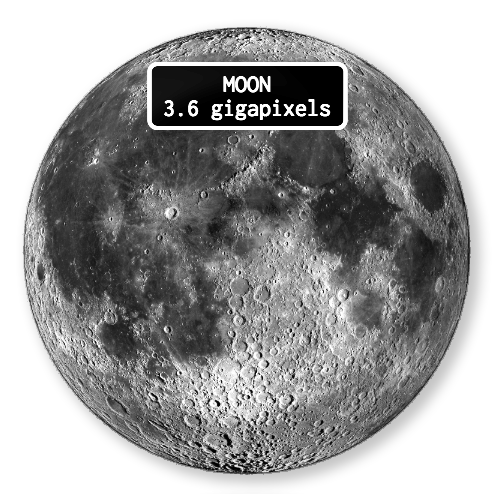
- QUICKMAP MOON DOWNLOAD HOW TO
- QUICKMAP MOON DOWNLOAD SOFTWARE
- QUICKMAP MOON DOWNLOAD SERIES
- QUICKMAP MOON DOWNLOAD DOWNLOAD
The LROC WAC images the entire Moon each month in seven wavelengths (321 nm to 689 nm).
QUICKMAP MOON DOWNLOAD SERIES
This educational series of posters walk through a history of human interest in the Moon and the amazing lunar discoveries from LROC and the LRO mission since 2009.

LROC has been exploring the Moon for well over a decade now. Mosaic of eight LROC NAC images provides this spectacular nadir view of the interior of Giordano Bruno crater (21 km diameter). The Atlantic and Pacific coasts of South America are visible to the left. The large tan area in the upper right is the Sahara desert, and just beyond is Saudia Arabia. The Earth straddling the limb of the Moon, as seen from above Compton crater. Nearside WAC 643 nm mosaic of images acquired between December 2010 and December 2011. Global WAC 643 nm mosaic of images between November 2009 and February 2011.įarside WAC 643 nm mosaic of images acquired between July 2010 and July 2012. WAC GLD100 with LOLA 30m DTM poleward of 75˚ latitude. The images were not registered to one another. NAC images were map projected onto the GLD100 DEM using the LOLA crossover corrected ephemeris. LROC WAC 643nm normalized (incidence=30˚, emission=0˚, phase=30˚) reflectance global mosaic using an empirically derived photometric function similar to that of Boyd et al., 2012 2795.pdf LROC WAC normalized (incidence=30˚, emision=0˚, phase=30˚) reflectance global color mosaic using an emperically derived photometric function similar to that of Boyd et al., 2012 2795.pdf (2014), Resolved Hapke parameter maps of the Moon, J.
QUICKMAP MOON DOWNLOAD DOWNLOAD
I am probably going to download other DIVINER data to see the file formats and the processes it takes to pull those up.LROC WAC normalized (incidence=60˚, emission=0˚, phase=60˚) reflectance global color mosaic (Version 1.0) using Hapke photometric function as seen in Sato et al. grd files for the Level 4 data, but they do not seem to be available on the Orbital Data Explorer.
QUICKMAP MOON DOWNLOAD SOFTWARE
Fourth, I tried to open the data in different processing software (PDSviewer, NASAview, PDS transform tool), still a no go.Īt this point, I think that I might be missing something. The programs have DIVINER data, but not PCP or PRP. Third, I checked out numerous planetary data systems (Moon Trek, Planetary Data Atlas, Quick Map) to see if any of the PCP or PRP datasets were there.
QUICKMAP MOON DOWNLOAD HOW TO
I do get the error “raster layer not provided” which makes sense, but I don’t know how to fix it. I did get the 3.14 version like you mentioned so I don’t run into any future issues. I was still missing them after the download, but when I go to the html link provided with the download, I am able to see the format files, along with. First, I redownloaded everything from [Lunar Orbital Data Explorer - Data Product Search ( ), since my download is missing the. Thanks so much for such an informative post! I tried all of this yesterday, and these are the issues I ran into:

Anything higher might incur a new planetary map projection bug, which has been reported and hopefully being worked on. NASA Solar System Treksįinally, for QGIS I would stick to QGIS 3.14.x for now.

Some of those might be graphical images (colorized, not data), but they should all be downloadable in GeoTIFF (polar stereographic map projection) format for QGIS. Once you switch to a polar view, in the top left, search for “Diviner”. Lastly, before doing any of that check out Moon Trek. Also note the label points to those “format” files all in caps (so you might need to rename the file to all uppercase also). Warning: those PDS3 table labels also point to a “format” file, so you would need to download them next to the. PDS Geosciences Node Data and Services: LRO DIVINER ()Īctually the labels *.LBL pointing to the huge *.TAB (table) files can be dropped into QGIS also, but sort of a mess to work with that many points (without interpolating them outside QGIS first – or trying to rasterize/interpolate inside QGIS). Both the equirectnagular and polar files should load into QGIS already – just drag the *.lbl (sitting next to the *.img) into QGIS. I also see polar GDR-元 in PDS3 format (*.lbl and *.img).

Can you list which particular files you wish to convert? I see Tables, flatten images (graphic only) and GRDs (data) but neither have geospatial labels or defined map projections (for QGIS).


 0 kommentar(er)
0 kommentar(er)
